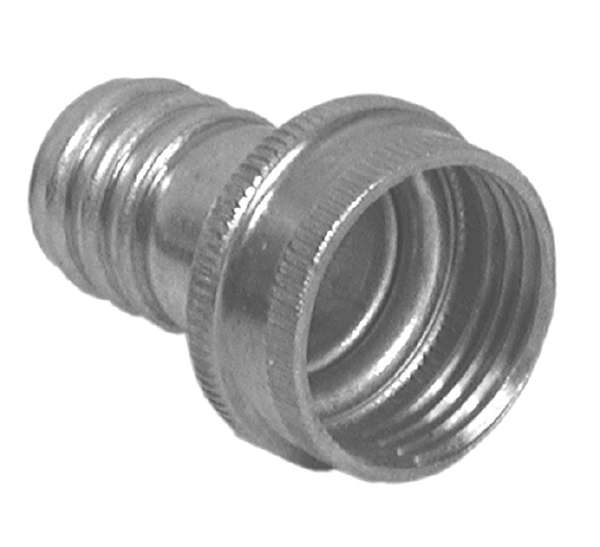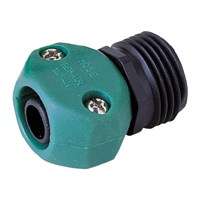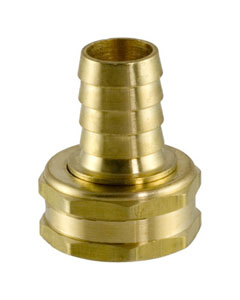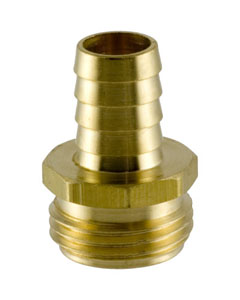GARDEN HOSES
The trick to buying a nice garden hose is to look at the fittings
at
the ends:
Obviously, you normally cannot see the portion of the fitting
that's
inserted into the end of the hose and clamped, but you can see the
threaded parts.
The fittings shown above are the really good type. They are
made
of brass, but beyond that they are machined out of a solid block
of
brass; sometimes these type are referred to as "rod brass".
They
almost always have the flats around them so you can use a wrench
to
tighten or loosen them if you choose. Although not visible
in
these photos, each fitting has a flat surface that contacts the
rubber
washer that seals the hose connection.
Believe it or not, you can actually buy these top-quality hose
fittings
at Walmart in a garden hose repair kit. They're not even
expensive. It makes you wonder why anyone would bother
fiddling
around with cheaper fittings.
The next step down:

Apologies that the color isn't right on that photo; the fitting
should
be brass-colored.
These type are likewise made from solid brass -- meaning there are
no
other
materials involved -- but they're not made from a solid block of
brass. Rather, they are made by stamping a piece of brass
sheet
into shape. Since there is no thickness to speak of, they
don't
have the flats around the edges for using a wrench; instead they
merely
have a knurling to provide some grip on the collar on the female
coupling shown, and no grip at all on the male, you're supposed to
grip
the hose. The surface inside where the rubber washer is
supposed
to seal is convoluted, as can be seen in the above picture; you
usually
can get it to seal, but it requires tightening the coupling
securely
and usually the rubber washer doesn't last too long.
All that said, perhaps the worst that can be said for these
stamped-brass fittings is that they're pretty easy to
damage.
With care, they often will last a good long time. The reason
to
avoid buying a hose with these fittings is what they tell you
about the
hose: It's cheap. A good hose will have good fittings,
not
these cheap things.
There are now plastic fittings for hoses:

Yeah, even cheaper than the stamped-brass fittings.
I suppose I should also mention strain relief. Many people
tug on
their hoses, which invariably results in the hose getting kinked
right
next to the fitting connected to the faucet. Many garden
hoses
now come with some sort of strain relief feature intended to
prevent
this kinking and spread the bend out through the first few inches
of
hose. On good hoses, this device is actually a metal coil
spring
wrapped around the first few inches of the hose. On cheaper
versions, it's just a plastic sleeve slid into place. The
plastic
sleeve idea doesn't work too well, and usually just slides down
the
hose after a while and the hose kinks at the fitting anyway.
You can also buy hoses that are only a few inches long that are
intended to add this strain relief feature to any hose. They
usually have that metal spring. They work great -- but if
you're
buying a hose, why not buy a hose with the spring built in rather
than
buying the separate item?
I'll also mention hose sizes. You generally can find hoses
in
1/2", 5/8", and 3/4". From what I've seen, the only excuse
for
buying a 1/2" hose is you want the cheapest hose you can
find.
The better hoses all seem to be 5/8" or larger. 5/8" seems
to be
a perfectly good size for general use around a home; it's the most
common size, which is important when you need to buy replacement
fittings or splice kits or whatnot. The obvious reason to
get a
3/4" would be for more flow, but you might want to note that the
piping
inside your house that's providing the water to the faucet is
probably
1/2". The other plausible reason to go for a large hose is
that
you're going to be running several hoses linked together and the
pressure loss adds up, so using a larger hose will result in more
available pressure out at the far end.





